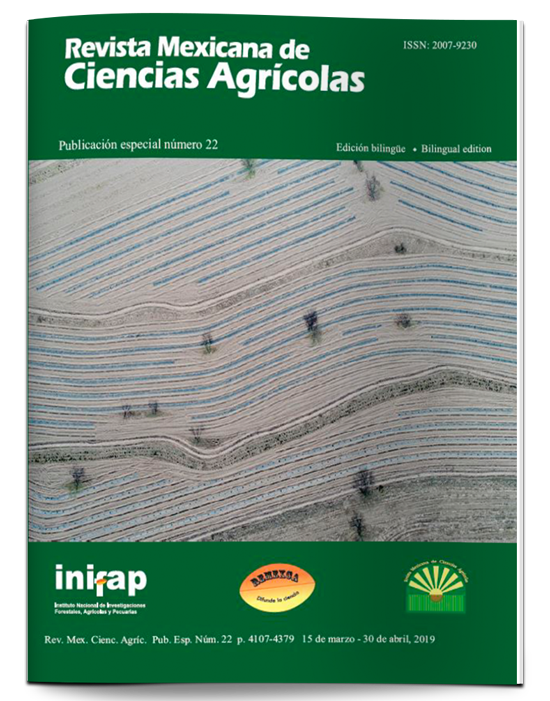Trophic spectrum of Turdidae birds in a Pinus cembroides forest with two canopy openings
DOI:
https://doi.org/10.29312/remexca.v0i22.1865Keywords:
insectivore avifauna, trophic coexistence, determination of diets, hunting techniquesAbstract
During January to October 2014, variables of insectivorous birds Turdidae were recorded in order to determine patterns of their trophic spectrum considering their feeding techniques and diets in a Pinus cembroides forest under two conditions of apparent disturbance in their canopy opening: semi-preserved (BPS) and disturbed (BPP) in the high protected natural area (ANPPA). It is used Canfield line methods, quadrants with central point and embedded frames, cut and shake of branches, count in points of 25 m with intensive search, capture with fog nets by constant effort; as well as indices of relative abundance (IAR), frequency of observation (Fo); Kruskal-Wallis, multiple correspondences (ACM); indexes of Jacknife1, Shannon-Wiener, Jaccard; c2 tests, Cluster, Poisson regression (ARP). The IAR was similar, Fo show analogy; Kruskal-Wallis there are no differences, ACM formed defined groups; the average richness, diversity and similarity of the entomological orders were relatively low; c2 the proportion of registered individuals are different, cluster graphically there are different groups, ARP there is effect of some plant variables on the abundances of insects and birds. Some patterns of the trophic amplitude of this type of birds were understood; finding that they contribute to the biological control of certain entomological components that could become harmful and forest pests of this type of forest; generating basic knowledge about the role played by the opening of the canopy in the presence of prey; however, it seems not to have it on avifaunal abundances in this particular region of Mexico.
Downloads
Downloads
Published
How to Cite
Issue
Section
License
The authors who publish in Revista Mexicana de Ciencias Agrícolas accept the following conditions:
In accordance with copyright laws, Revista Mexicana de Ciencias Agrícolas recognizes and respects the authors’ moral right and ownership of property rights which will be transferred to the journal for dissemination in open access. Invariably, all the authors have to sign a letter of transfer of property rights and of originality of the article to Instituto Nacional de Investigaciones Forestales, Agrícolas y Pecuarias (INIFAP) [National Institute of Forestry, Agricultural and Livestock Research]. The author(s) must pay a fee for the reception of articles before proceeding to editorial review.
All the texts published by Revista Mexicana de Ciencias Agrícolas —with no exception— are distributed under a Creative Commons License Attribution-NonCommercial 4.0 International (CC BY-NC 4.0), which allows third parties to use the publication as long as the work’s authorship and its first publication in this journal are mentioned.
The author(s) can enter into independent and additional contractual agreements for the nonexclusive distribution of the version of the article published in Revista Mexicana de Ciencias Agrícolas (for example include it into an institutional repository or publish it in a book) as long as it is clearly and explicitly indicated that the work was published for the first time in Revista Mexicana de Ciencias Agrícolas.
For all the above, the authors shall send the Letter-transfer of Property Rights for the first publication duly filled in and signed by the author(s). This form must be sent as a PDF file to: revista_atm@yahoo.com.mx; cienciasagricola@inifap.gob.mx; remexca2017@gmail.
This work is licensed under a Creative Commons Attribution-Noncommercial 4.0 International license.



